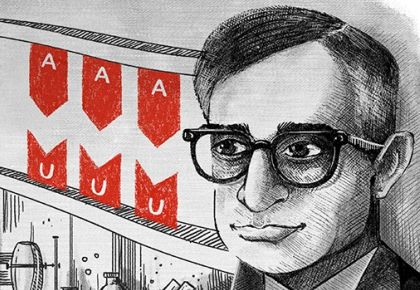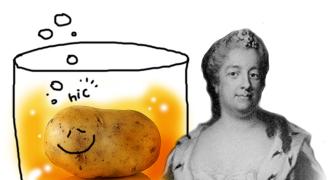The Indian-American biochemist, whose passion for science started under a tree in a small village in India, won a Nobel Prize!
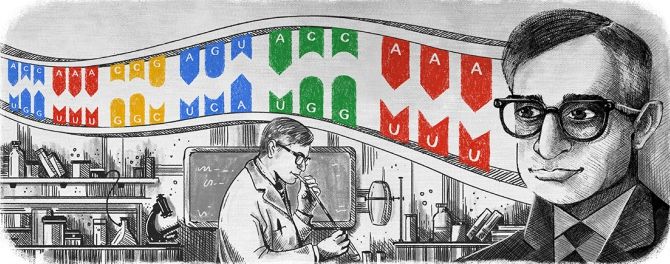
Also read: Dr Khorana, one of science's immortals
Today's Google Doodle celebrates Har Gobind Khorana, the Indian-American biochemist whose passion for science started under a tree in the small village of Raipur in pre-Partition India and led him to a Nobel Prize.
Celebrating his life on his birthday, Google wrote, 'Dr Khorana was born in 1922 as the youngest of five children.
'His father instilled the importance of learning by helping his children to read and write, which wasn't common for villagers at the time.
'Scholarships helped propel the budding scientist through his scholastic journey, obtaining his doctorate in organic chemistry in 1948.
'Dr Khorana conducted research at universities in England, Switzerland, and Canada, and it was at the University of Wisconsin that he and two fellow researchers received the Nobel Prize in Physiology or Medicine in 1968. Together, they discovered that the order of nucleotides in our DNA determines which amino acids are built. These amino acids form proteins, which carry out essential cell functions.'
Dr Venkatraman Ramakrishnan, who won the Nobel Prize in Chemistry in 2009, highlighted the significance of Dr Khorana's Nobel-Prize winning work after the latter's death in 2011.
Speaking to Rediff.com then, he had said. "The genetic code, which Dr Khorana helped establish, is a foundation of modern molecular biology, which would be unthinkable without it. It is also the basis for a huge number of modern disciplines, including analysis of genomes and understanding of evolution."
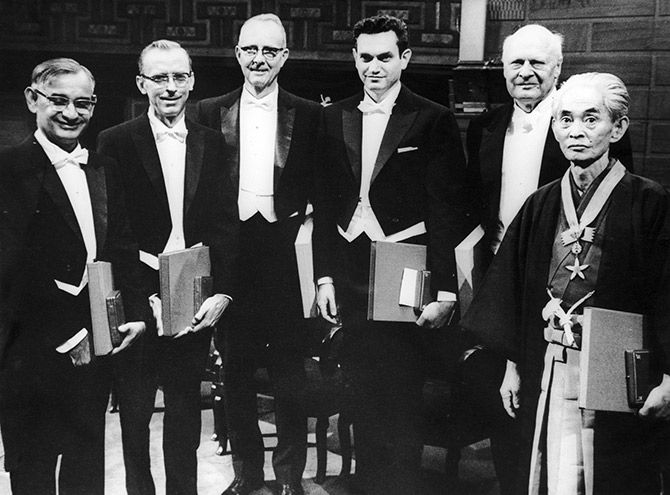
Khorana, Holley and Nirenberg shared the prize for medicine.
Khorana received a host of awards during his lifetime, including the US National Medal of Science.
Here's why Dr Khorana's work holds the key to the future.
Photograph: Central Press/Hulton Archive/Getty Images.
Dr Khorana's accomplishments didn't stop there, Google noted: 'Fewer than five years later, Dr Khorana made a second scientific breakthrough when he constructed the first synthetic gene.'
Dr Ramakrishnan had explained its importance in a conversation with a Rediff.com, "After he got the Nobel Prize for the code, Dr Khorana used his skills as a synthetic organic chemist to first completely synthesise a gene, insert it into a living organism and show it worked. At the time, this was an absolute tour de force. It is the basis for much of the synthetic biology today, and much of recombinant DNA technology relies on his groundbreaking work."
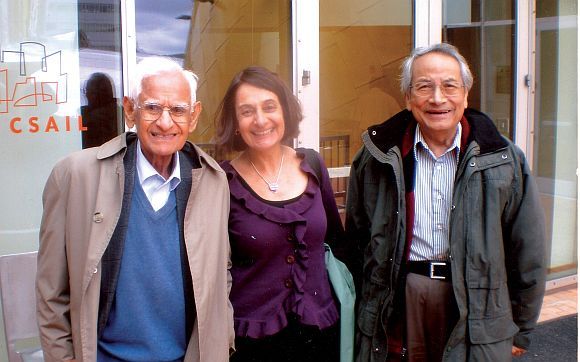
Don't miss: Dr Khorana, the 'loving father, caring mentor'
Dr Ramakrishnan had noted that subsequently Dr Khorana worked on proteins that span the cell membrane, in particular membranes that are responsible for vision or that pump ions through membranes: "This is a major area of research in biology today to which Dr Khorana made groundbreaking contributions.
He said the information in genes is used to make proteins and the genes in the form of DNA, store this information as a sequence of four building blocks of DNA called bases, A,T,C and G.
He elaborated, "The exact order and length of each gene is different and codes for a different protein. Proteins, however, are polymers of 20 types of building blocks called amino acids. The problem of how to go from the four-letter alphabet of DNA to the 20-letter alphabet of proteins was solved initially by Francis Crick, who showed it was a three-letter -- non-overlapping -- code. This then left the question of which amino acid each group of three bases specified. That is called the 'genetic code', and it was solved by Nirenberg and Khorana while he (Dr Khorana) was at the University of Wisconsin and their colleagues.
"Dr Khorana's work on elucidating the genetic code is part of every undergraduate textbook on molecular biology. So, in that sense it has influenced us all."
He had revealed that his own work is on how the ribosome helps read the code that Nirenberg, Khorana and others elucidated.
